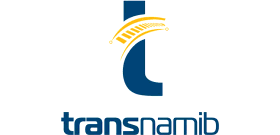 TransNamib gains momentum with Key Rail projects and Government support
TransNamib gains momentum with Key Rail projects and Government support
While attending the Land-Linked Zambia 2024 event in Zambia on the 4th and 5th of April, Railways Africa Magazine had the opportunity to have a brief Coffee with the Editor session with TransNamib’s acting CEO, Webster Gonzo. Followers of the industry are aware that there is much happening and anticipated in the Namibian rail sector, spurred in part by government support and renewed investment. Starting with a status update on the Trans-Kalahari Railway project, the process has now moved from the expression of interest stage to requesting proposals from the entities shortlisted to continue with this initiative (to be issued imminently, if not already). Gonzo notes that the project is a strategic route that opens many opportunities for TransNamib, and they are looking forward to the process being finalised as soon as possible. In addition to the Trans-Kalahari project, there is ongoing investment being made into the Kranzberg-Otjiwarongo Project, which is, of course, part of the larger Kranzberg-Grootfontein Project. Thus, the portion that extends all the way up to Otjiwarongo has also received a budgetary allocation. The discussion during our Coffee with the Editor provided a number of updates on railway projects in Namibia, including the Trans-Zambezi project.
In terms of challenges, TransNamib has identified several major ones. The state of the infrastructure is probably the most significant issue that needs urgent resolution. In response, the government is making strategic investments in this area. Another major challenge is the ageing locomotive fleet, with many over 60 years old. Gonzo highlighted that the Government has, once again, extended support to TransNamib by securing the required funding to renew their locomotive and rolling stock fleet. The procurement process is expected to commence in line with the finalisation of the funding, opening it to the international market around September this year.
Recognising the significant lead time in acquiring new locomotives, several options are under consideration to bridge the gap during this period—including open access, leasing, and the refurbishment of approximately 30 stationary locomotives. Concerning open access, Gonzo remarked that regardless of being in the private or public sector, everyone must work with the current infrastructure, meaning that all parties will face similar challenges in one way or another. However, TransNamib is open to discussing options with private entities. Currently, TransNamib does not offer open access per se; the company has run an expression of interest on the Southern Line (from Upington up to the Port of Lüderitz), and an announcement is expected in the next two months.
Gonzo took the opportunity to express his appreciation to the Government of the Republic of Namibia for its support of the railway sector. At the conference in Zambia, it was evident that similar challenges are prevalent across the Southern African region. Despite these common issues, Gonzo notes that Namibia stands out because its government has shown real commitment. It is prepared to ‘put its money where its mouth is,’ as the saying goes. This is part of a broader initiative to address the congestion caused by excessive road freight. The government has therefore prioritised enhancing the railway infrastructure by securing the necessary funding. This recently announced budget for rail has been finalised, and the funds have been allocated and approved, according to the announcement made by John Mutorwa, Minister of Works and Transport in Namibia, during the Land-Linked Zambia event.
